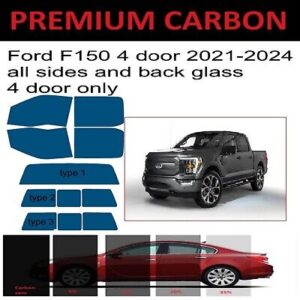Window tinting, commonly known as “insulfilm” in some regions, has long been a popular way to enhance both the aesthetics and functionality of vehicle windows. But in recent years, the window tinting industry has seen some remarkable advancements. If you’re considering window tinting for your car, here’s a deep dive into the latest innovations that can make a huge difference in performance, comfort, and style.
1. Ceramic Window Tinting: The New Gold Standard: Latest Innovations in Window Tinting Film for Vehicles
Ceramic tinting is one of the most impressive advancements in recent years. Unlike traditional dyed or metallic tints, ceramic tint contains microscopic ceramic particles, making it an ideal choice for superior performance.
- Heat Reduction: Ceramic tint offers exceptional heat rejection, blocking up to 85% of infrared rays. This means a cooler interior even during the hottest days, reducing the strain on your car’s air conditioning and ultimately saving fuel.
- UV Protection: With the ability to block up to 99% of harmful UV rays, ceramic tint protects passengers and interior surfaces from UV damage, reducing the risk of skin issues and fading upholstery.
- No Signal Interference: Unlike metallic tints, ceramic films don’t interfere with electronic signals, including GPS, mobile, or radio frequencies.
2. Carbon-Based Tints: The Environmentally Friendly Option
Another modern option is carbon tint, which is popular for its durability and eco-friendliness. Carbon tint films do not contain any metal or dyes, making them more sustainable and longer-lasting.
- Increased Longevity: The carbon particles used in these films won’t fade or degrade over time, so they maintain their appearance longer than traditional tints.
- High-Quality Clarity: Carbon tints offer excellent clarity, ensuring that visibility is maintained even in low light conditions, making it a safer choice for night driving.
- Eco-Friendly Composition: Since it doesn’t use metal or dye, carbon tint is less harmful to the environment during production and disposal.
3. Smart Window Tints: Adaptive Technology
The newest trend making waves in the industry is smart or adaptive window tinting. These innovative films can adjust their darkness level depending on the amount of sunlight exposure.
- Automatic Tinting: Smart tint uses photochromic technology, which allows it to become darker when exposed to direct sunlight and lighter in cloudy or nighttime conditions.
- App-Controlled: Some smart tint models are app-compatible, giving drivers control over the level of tint from their smartphone. This customization is ideal for users who want different levels of tinting depending on their driving environment.
- Enhanced Privacy: Adaptive tints are excellent for privacy, especially when parked in public spaces. The tint will darken automatically, keeping prying eyes away from your vehicle’s interior.
4. Hybrid Tinting Films: Combining the Best of Both Worlds
Hybrid tinting films are designed to give drivers the benefits of both dyed and metallic tint without the downsides of either. By combining both technologies, hybrid tints offer excellent heat rejection with minimal signal interference.
- Balanced Performance: Hybrid films provide solid UV and heat protection without the level of reflection seen in purely metallic films
- Less Glare, More Clarity: These films reduce glare without sacrificing visibility, making them ideal for drivers who want the benefits of tinting without heavily affecting aesthetics or night-time clarity.
- Cost-Effective Option: Hybrid tints are generally more affordable than ceramic or smart tints while still offering impressive performance, making them an attractive option for budget-conscious drivers.
5. Anti-Glare and Safety Enhancements: Added Value Beyond Tinting
Some window tint manufacturers now include additional features like anti-glare coatings and safety films that enhance protection.
- Anti-Glare: Anti-glare coatings reduce the intensity of bright light, making driving safer in sunny or nighttime conditions.
- Shatter-Resistant: Many new tints come with added shatter-resistant layers, which can prevent the glass from shattering upon impact. This added layer of safety can be a big advantage in the event of an accident.
- Scratch-Resistant Coatings: To extend the life of the tint, scratch-resistant coatings are now more common, ensuring a smooth and clear appearance over time.
Which Tint is Right for You?
With so many innovations in window tinting technology, the choice can be overwhelming. Here are some factors to consider:
- Budget: For those seeking high-end performance and are willing to invest, ceramic and smart tints are the best options. For a more affordable choice, hybrid and carbon tints are excellent choices.
- Climate: If you live in a region with intense sunlight, ceramic tints can provide superior heat reduction, making them more suitable.
- Electronic Use: If you frequently use GPS or radio systems, ceramic and carbon tints, which avoid interference, may be your best options.
Conclusion
The latest advancements in window tinting technology have expanded the range of choices and functionalities available to drivers. From heat-reducing ceramic and eco-friendly carbon to smart, adaptive tints, each option offers unique benefits. Investing in the right tint not only enhances your car’s appearance but also boosts comfort, privacy, and even safety.



